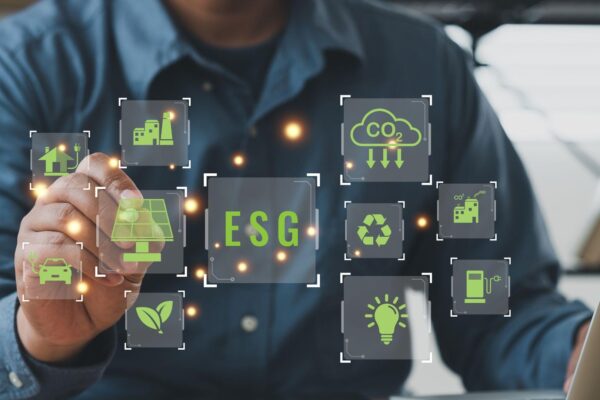Artificial Intelligence (AI) is one of the most talked about technologies of our time. It’s reshaping industries, streamlining operations, and helping businesses make faster, data-driven decisions. But there’s another side of the story that isn’t talked about enough, which is the hidden environmental cost of using AI too much.
As the world struggles with an energy crisis and the growing threat of climate change, it’s time for businesses to reflect. Is our growing reliance on AI helping us become more sustainable, or is it silently adding to the problem, especially for the environment?
Table of Contents
ToggleAI Needs Energy
Every time a business uses a chatbot, trains a machine learning model, or runs AI-powered analytics, businesses are consuming significant amounts of electricity. The more reliant on AI, the more businesses need to always put the systems continuously powered. This electricity often comes from fossil fuels especially in regions like Indonesia, where coal and gas still dominate the energy mix.
In fact, training just one large AI model can consume as much electricity as over 100 households do in a year. And that’s not even counting the electricity needed to run the AI system after training, or to power the data centers that store and process your business’s digital data. This “invisible energy drain” is becoming a growing issue. The more businesses turn to AI to solve problems, the more energy gets burned behind the scenes which feeds data-hungry algorithms that never sleep.
The Carbon Footprint of AI

When we talk about climate impact, it’s not just about smokestacks and plastic waste anymore. But now, digital carbon footprints are real and growing fast. AI contributes to carbon emissions in multiple ways. First, for training models, it requires high-performance computing for weeks or even months. Next, when operating AI systems at scale (like recommendation engines or real-time customer service bots), mostly it requires 24/7 energy supply. Also, the data centers for the ‘house’ of AI infrastructure are often cooled using energy-intensive methods, especially in hot climates.
Usually, a single AI-powered search engine query or voice assistant request can consume several times more energy than a regular one. Multiply that by millions of users and daily tasks, and the emissions pile up fast. So even though AI may look sleek and clean on the surface, the reality is that its environmental impact can be anything but.
Read other article : This Is How Energy Crisis Should Not Get Ignored
Over-Automation is Overkill
AI can be helpful. But using it for everything is where problems start. In the race to “digital transformation,” some companies automate every small task with AI, even when a human could do it better or more efficiently.
If business let the AI work it all alone, here are some possible case that might be happened:
- For marketing purpose, AI-driven marketing tools constantly generate and test new content, leading to unnecessary energy use and even consumer overconsumption.
- For business who use predictive systems may encourage businesses to overproduce stock or packaging materials, increasing waste.
- AI-driven decision-making tools might run simulations endlessly, consuming vast computing power with little added value.
Overusing AI doesn’t just waste energy, it also disconnects businesses from mindful, conscious practices. When everything becomes automated, it’s easy to forget the real-world impact behind the digital curtain. Here is why, businesses should be wise to decide which scope of task can be automated, and which should be ‘naturally’ done by humans.
AI’s E-Waste and Hardware Demand
Beyond electricity, AI’s environmental impact also extends to physical hardware. Training and deploying advanced AI systems require high-end servers, GPUs, and data infrastructure. These machines have a short lifespan and contribute to the growing global problem of electronic waste (e-waste).
Building and disposing of AI hardware comes with significant carbon costs, from the mining of rare earth metals which damaging ecosystems and consuming water and fossil fuel energy, to the substantial emissions from manufacturing server farms and cooling systems, and finally to the end-of-life disposal, which often results in toxic waste dumped in landfills in developing countries.
As AI adoption rises, so does demand for this hardware, amplifying an already urgent environmental crisis that many tech users never see.
Let AI Support Sustainability, Not Compete with It
After all, It’s clear that AI has a massive environmental cost when overused or misused. And in the middle of a global energy crisis, this is not something we can afford to ignore. If AI is going to be part of our future, it needs to be part of the solution, not the problem. That means businesses should only use AI when it truly adds value, not just because it’s trendy, and make sure to choose energy-efficient AI solutions and sustainable data providers.
Furthermore, do not miss to include AI’s carbon footprint in your company’s ESG (Environmental, Social, and Governance) reporting. Technology should empower progress, but progress should never come at the expense of the planet. AI must work hand-in-hand with sustainability goals, not compete against them. Looking to align your digital strategies with sustainability goals? Visit satuplatform to explore how your business can adopt responsible technology practices, strengthen ESG commitments, and build a greener future, starting today!
Similar Article
Bagaimana Peran Perang dan Militer sebagai Kontributor Jejak Karbon Global
Konflik dan perang menciptakan kontributor jejak karbon baru dengan dampak signifikan dan sayangnya, sebagian besar tidak dihitung. Emisi ini jarang…
Why Product Lifespan Is the Next Frontier for Sustainable Business
Embracing product longevity and extending product lifespan emerges as a current and indispensable strategic priority for cultivating sustainable business growth…
Green Building sebagai Cara Mengurangi Jejak Karbon, Ini yang Perlu Dilakukan!
Di tengah isu perubahan iklim yang semakin mendesak, bisnis dan masyarakat global mulai sadar pentingnya pembangunan yang lebih ramah lingkungan.…
Unveiling the Environmental Impact of Children’s Toys Industry
The global toy industry plays a significant role in early childhood development, creativity, and education. Toys bring joy, imagination, and…
ESG as Sustainability Initiatives for Modern Industry
In today’s world, sustainability is no longer just a “nice-to-have”, but it’s a must. With rising concerns about climate change,…
ESG Strategies for Business Growth in Developing Countries
In today’s fast-changing world, businesses are no longer only measured by profits. Companies are now expected to be responsible for…







